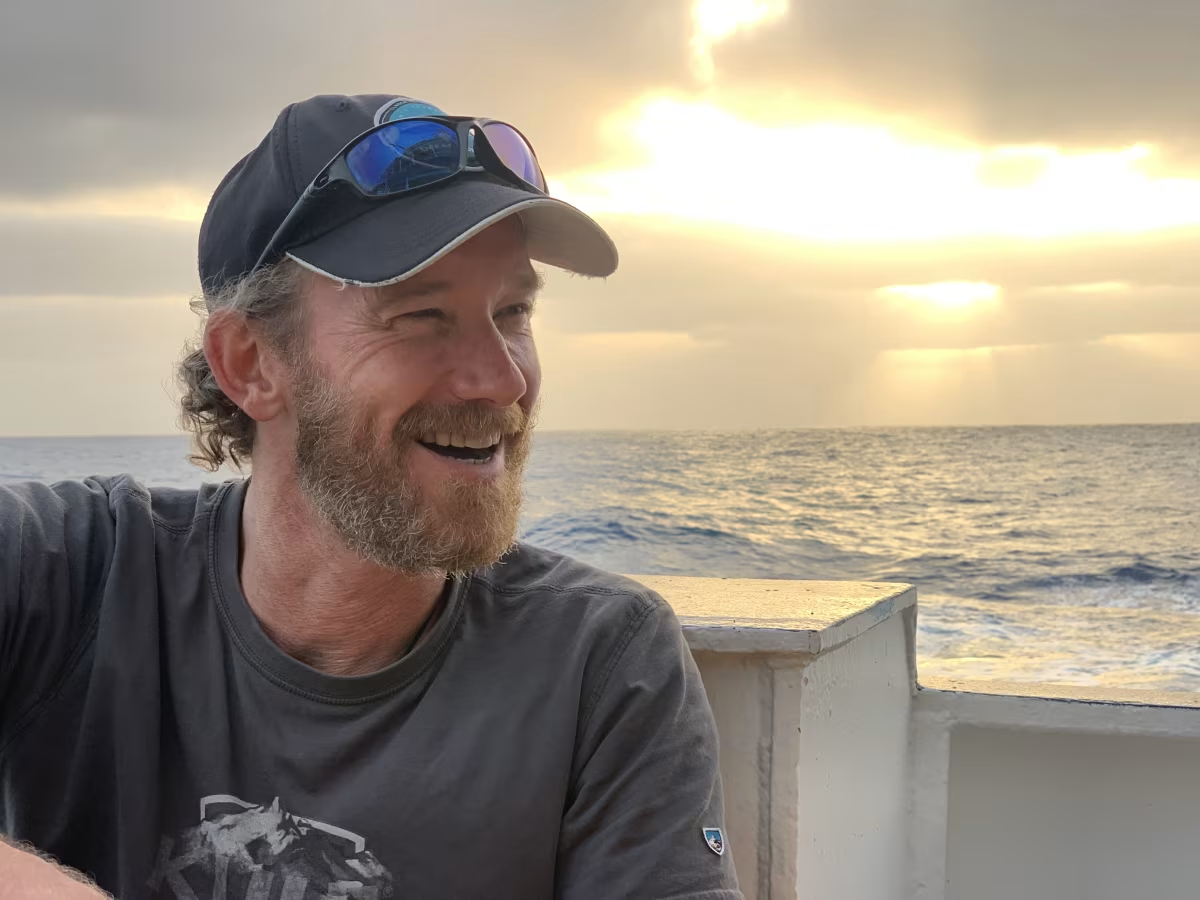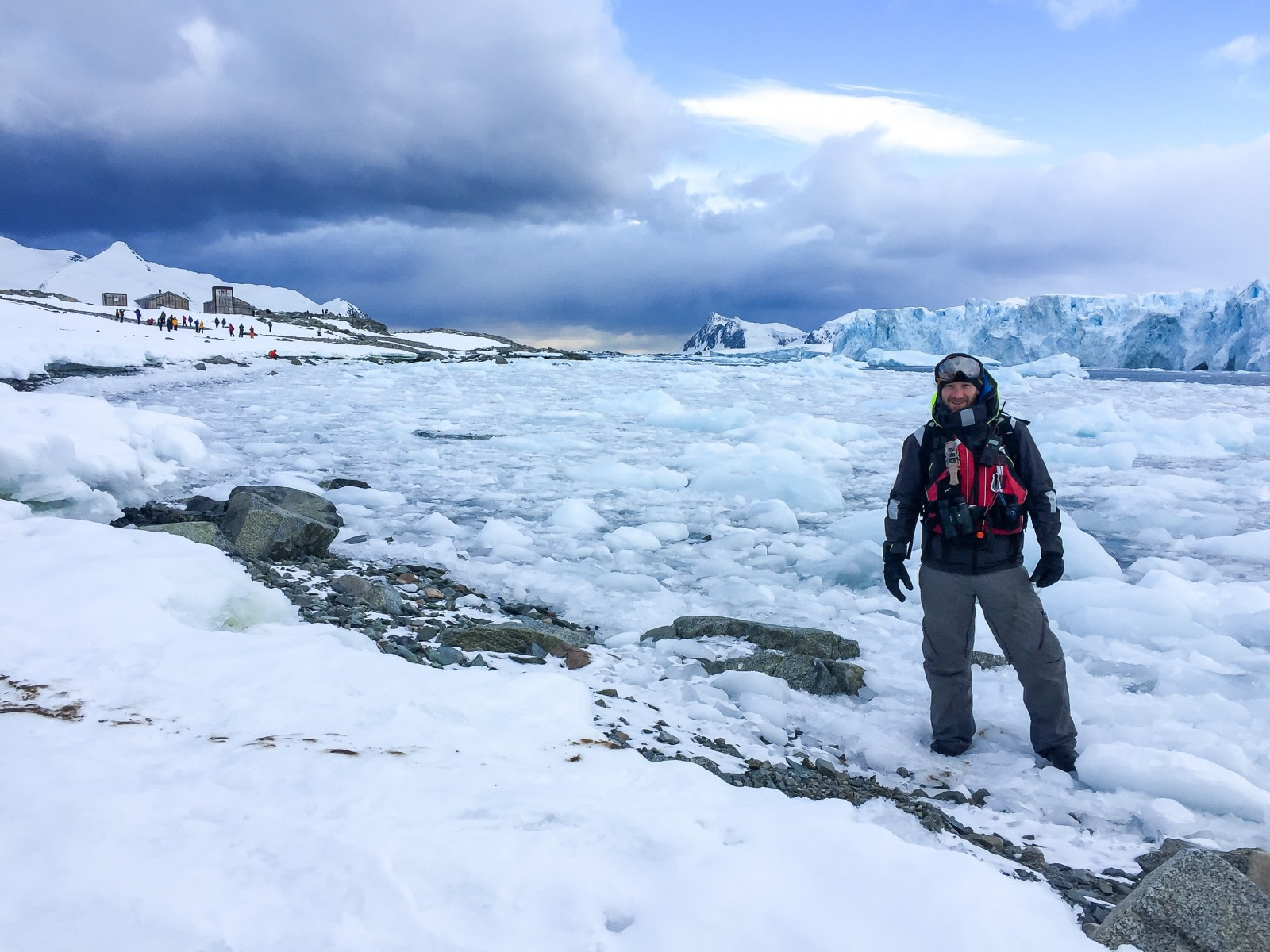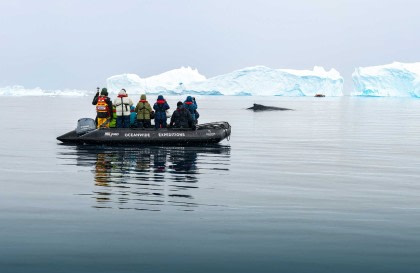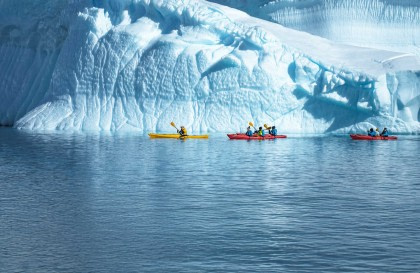Interview with Antarctic camping guide Rustyn Mesdag
Polar expedition guides come in many forms. Some are temporary seasonal workers who enjoy the job’s freedom in their youth but eventually leave for more stable work, and others are hardcore outdoors addicts who stick with the profession well beyond their forties and end up amassing skills and experiences easy to envy but harder to equal.
Polar camping guide Rustyn Mesdag falls into the second category. He grew up in one of the richest and most ecologically diverse regions on the planet: America’s Pacific Northwest, home of numerous old-growth forests, multiple active volcanoes, and geographical marvels such as Crater Lake, the Columbia River, and the Cascade Mountain Range.
Rustyn has been leading hikers, climbers, and mountaineers for years, both in the far Northern Hemisphere and far Southern. And though he’s relatively new to polar expedition work as of this interview, he shows no signs of stopping much less desire to do so.
We sat with Rustyn for a chat that easily turned into an hours-long conversation, learning a bit about the origins and adventures of this American-born, polar-bound camping guide.

You grew up in the Pacific Northwest, opened a guide service and equipment shop in Patagonia, and now lead camping excursions in Antarctica. Take us through that.
I was born in Seattle, which is a big city but has a lot of great mountain ranges nearby, and I spent most of my childhood there. I also spent most of my teenage years in Oregon, and because my parents are Dutch, I grew up speaking Dutch and English.
Oregon and Washington are known for their amazing rivers, forests, and mountains, so I grew familiar with the outdoors at a very early age. In my twenties, I became a climbing guide for a few years on Mount Rainier, an active stratovolcano that stands about 4,400 meters (14,400 feet) above sea level in the Cascade Mountains.
So it actually wasn’t too much of a leap when one of my Oregon friends and I decided to open our own guide service, rental center, and hostel in Patagonia in 2004. We do treks up to 15 days there, some big wall stuff, and we also do gear rentals and operate a hostel.
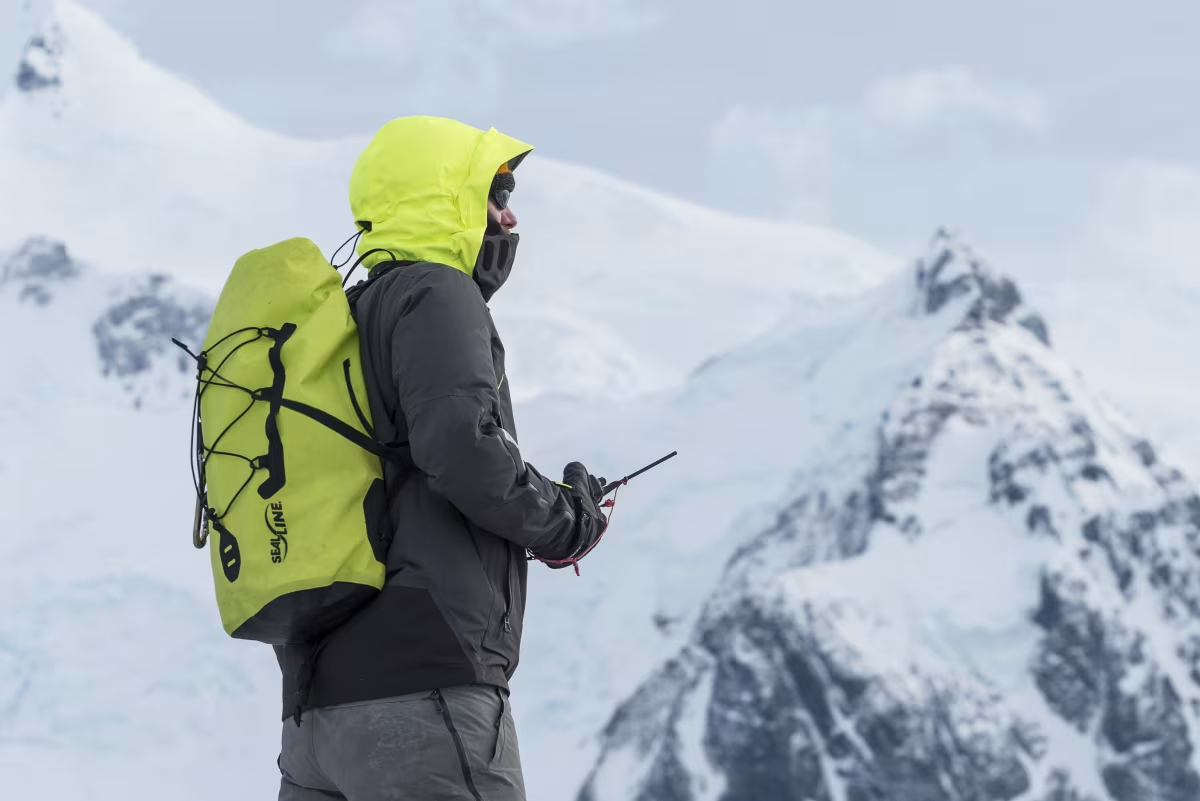
Was it your birthplace that attracted you to the outdoors life?
Honestly, it was the gear.
All the cool climbing and outdoor gear really propelled my interest, and this led me to good backpacks and tents and hiking equipment. I remember when my brother got the first high-end Gore-Tex jacket of our group, and we all just lost our minds. We loved it.
But after more than 15 years of running our own guide service in Chile, my partner and I had kind of gotten the whole gig down. It was time for a new challenge. Around that time, as luck would have it, two polar diving guides from Oceanwide Expeditions came to one of our lectures. And it wasn’t long after that that they asked me if I wanted to work in Antarctica.
I had been to Antarctica before in 2006, but to be honest, the offer seemed too good to be true. The next morning, though, I got an email from Oceanwide’s field operations manager inviting me for an expedition. Three years later, here I am.

So you did your first Antarctica voyage that same season?
Yeah, just a few months later. Then I was invited for two more trips before I left Antarctica. By the end of that season, I was also invited to the Arctic.
Did your Antarctic experience live up to expectations?
It more than lived up to my expectations. The animal encounters there are amazing. As much as I love the alpine aspect of the far north, in Antarctica I have had experiences I just haven’t had anywhere else – intimate moments with humpback whales, penguins, baby elephant seals. Moments where you’re actually acknowledging each other.
Every time I go to Antarctica, I love it. I love it.
Any favorite spots for yourself or the passengers?
Obviously, there are the big places everyone wants to see: Paradise Bay, Lemaire Channel, Neko Harbor. But sometimes we have to deviate from our plans when conditions aren’t safe, and we end up doing things that turn out even better than our original itinerary.
Everyone’s really excited when that happens, and that’s what really makes a great expedition leader or guide. That ability to think on your feet and roll with the punches is invaluable.

What kind of an expedition guide do you see yourself as?
Well, a lot of our guides are amazingly educated experts in a particular field of science. They’re biologists or geologists or glaciologists, but they did not necessarily start out their careers in adventure tourism. They were studying something serious while I was running around in the mountains.
And then there are other guides, like myself, who are not experts in any one field but have been guiding all over the world in all kinds of different positions. I have been a guide in some capacity for over 25 years, and now I’m learning the science behind Antarctica and the polar regions. I love guiding, but I’m very lucky to work with these real experts.
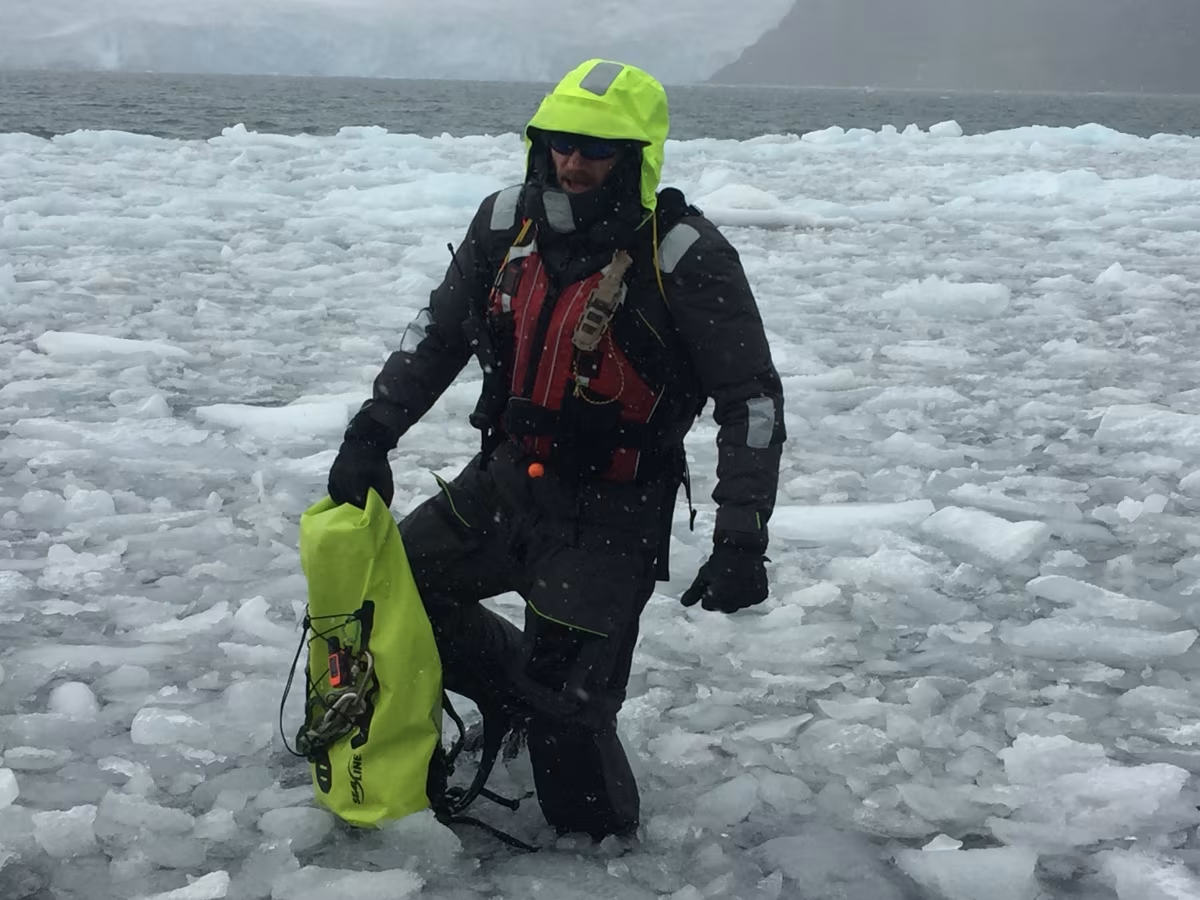
See, there are tons of college kids and people in their twenties who are super motivated and physically fit and cool with being broke and living out of their car. They do this just so they can keep working their dream job in the mountains.
But somewhere in their thirties, these people tend to land a “real” job and crave a little more comfort than living in a VW bus. If they make it past that point, though, and if they keep guiding and gaining valuable experience, they become really valuable. And if they end up in their forties and fifties as lifelong guides, they also have a lot of perspective. The outdoor industry needs these people, the people that seem to have been around forever.
That’s me. I stuck it out, I got through that invisible wall, and now I have years of hands-on guiding experience. And I have to admit to myself that this is what I’ll probably do forever.
It sounds like you are more Team Antarctica than Arctic.
That’s true. I’ve been on one expedition in the Arctic, and I did enjoy it, but the Arctic region feels a little more accessible to me. When I’m in Antarctica, I feel like I’m on the moon. I feel like we should not be there, like we’re really far away.
That is more thrilling to me personally.
Most of the guides I talk to say the same thing: The first polar region they worked in became their favorite, so maybe it’s a “first love” kind of thing. I do love the Arctic, though. But I had to learn a few things there, like how to spot a polar bear in the snow.
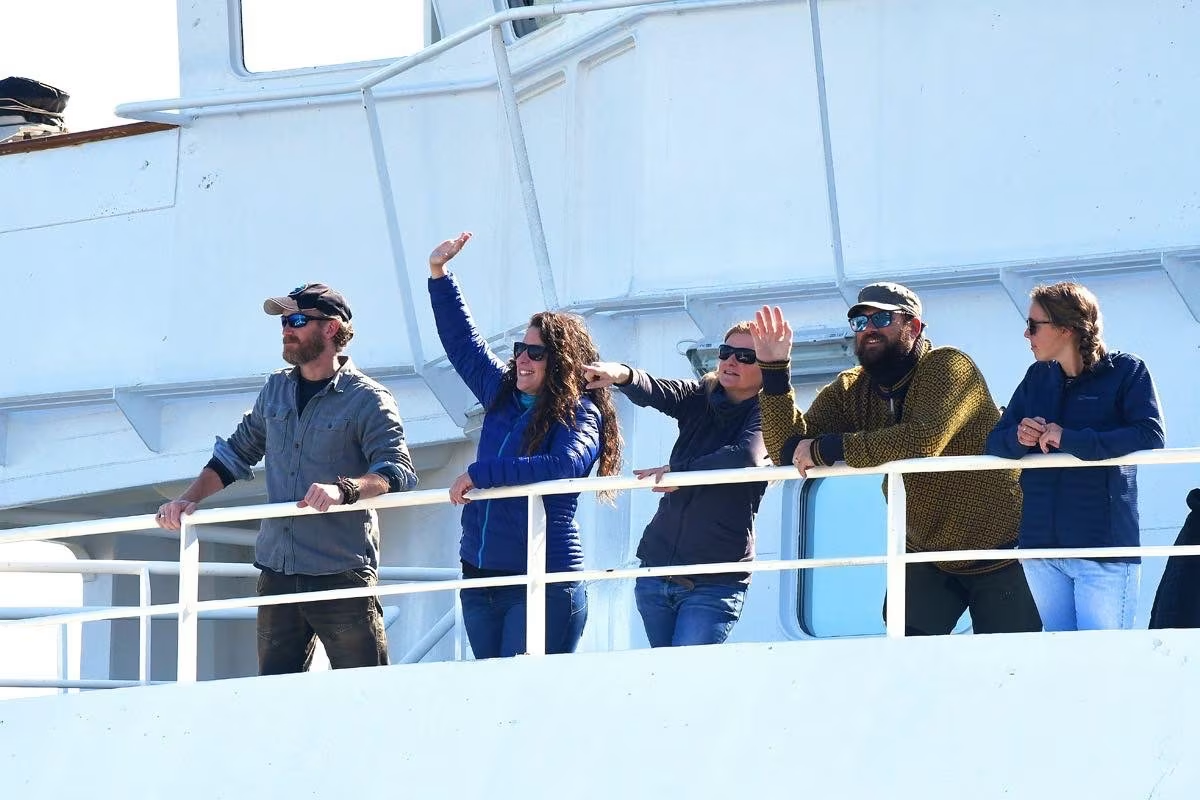
How do you spot a polar bear in the snow?
Look for the yellow blot of mayonnaise.
Is that a Dutch thing? We know their love of mayonnaise…
Actually, that was how one of our expedition leaders, Ali Liddle, explained it to me. Polar bears are always a little yellow against the bright white of the snow. So if we see that glob of mayonnaise in the distance, we know it’s a bear.
Polar bears are a real threat in the Arctic, so we keep a close lookout for them and carry big rifles. This is also why do not do any camping in the Arctic, only Antarctica.

For new readers, can you tell us a little about Antarctic camping?
We take out 30 guests and sleep on the ice for a night. The ship sails a short distance away, and we have a quiet night with nothing around us except raw Antarctica. It’s amazing.
We give each guest a dry bag that contains their camping kit. The kit includes two sleeping mats, two sleeping bags, and a cotton liner. The guides bring all the gear for preparing the camp, and we show the passengers how to set up their sleeping dugouts. We even made a short video (below) for people who are considering camping with us.
The good thing about polar camping is that the guests get to just be there. Most of the trip, they’re going here and there, taking part in all the different activities, looking for wildlife, taking pictures. But polar camping lets you just hang out and take it all in.
Guests can walk around within the safety zone, sit and meditate on the surroundings, watch for wildlife, or chat with other passengers. Some people stay up all night long.
Meanwhile, you and the other guide are supervising?
We’re there camping with everyone, always watching that conditions are safe and people are clear about the rules. We have to respect the Antarctic environment, too, so it’s always important that we leave the area exactly as we found it.
Final question: What’s the most stand-out experience you have had while camping in Antarctica?
There have been a few very special animal encounters and some exciting moments with regard to rough ocean conditions. But there was this one thing that happened, and to this day I have not found an explanation for it. I have contacted other guides, mountaineers, and geologists about this event, but nobody has been able to tell me what it is.
It’s almost weird to talk about…
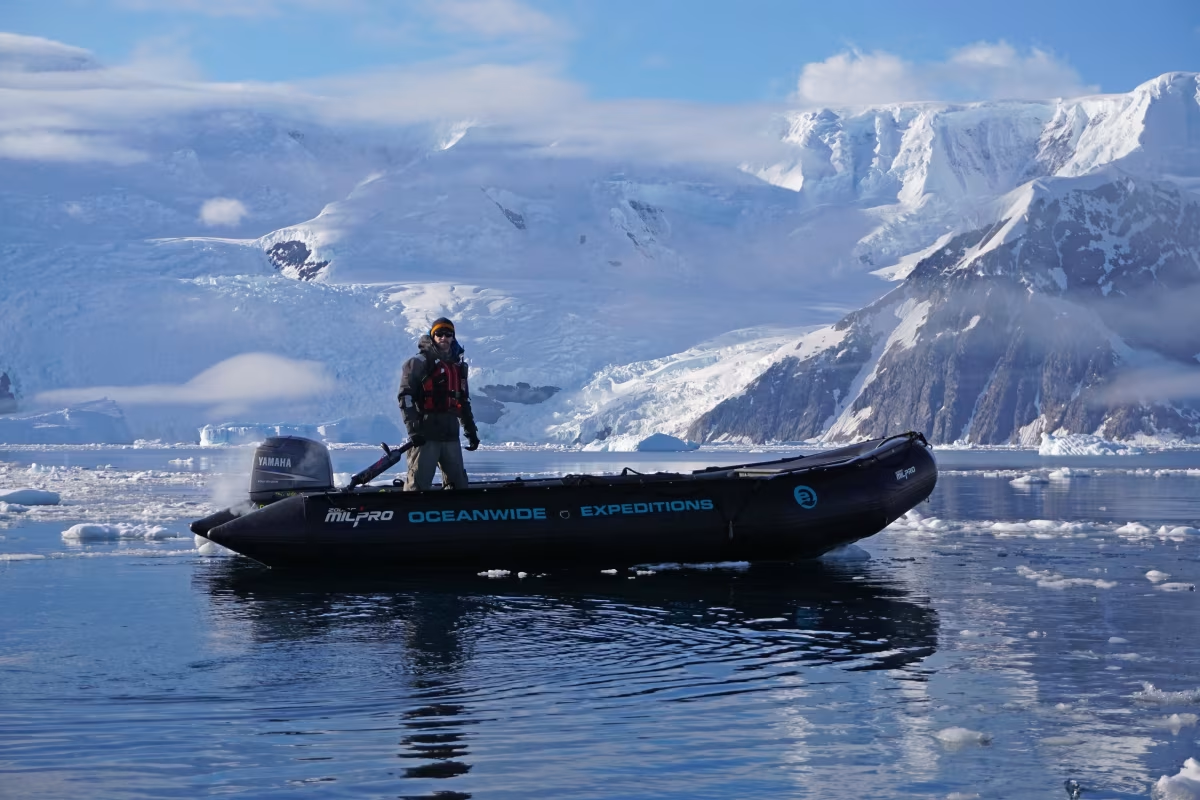
Then it’s sure to be good. Please continue.
We were camped at Kerr Point, your typical camp spot in Antarctica. There’s a cliff near that area with hanging glaciers, and avalanches fall from it all the time. They sound really close, these large avalanches and ice falls, but they are actually farther away than they look and are completely safe.
So we are camped there one night late in the season, and it’s really dark. Just stars, no visible moon. Around three in the morning, I hear the crack of another ice fall.
I look up and can see the different gray contrasts between sky, cliff, and mountain. When the ice falls, I see the dark waterfall effect. But when the ice hits the base of the mountain, the whole explosive cloud of snow turns glow-in-the-dark green.
Like glowstick green, just a bit softer.
But since I’m half asleep and it’s the middle of the night, I don’t think much of it. Then twenty minutes later, on the same cliff, there’s another ice fall. And when I look up again, I see the same green light in the cloud of snow.
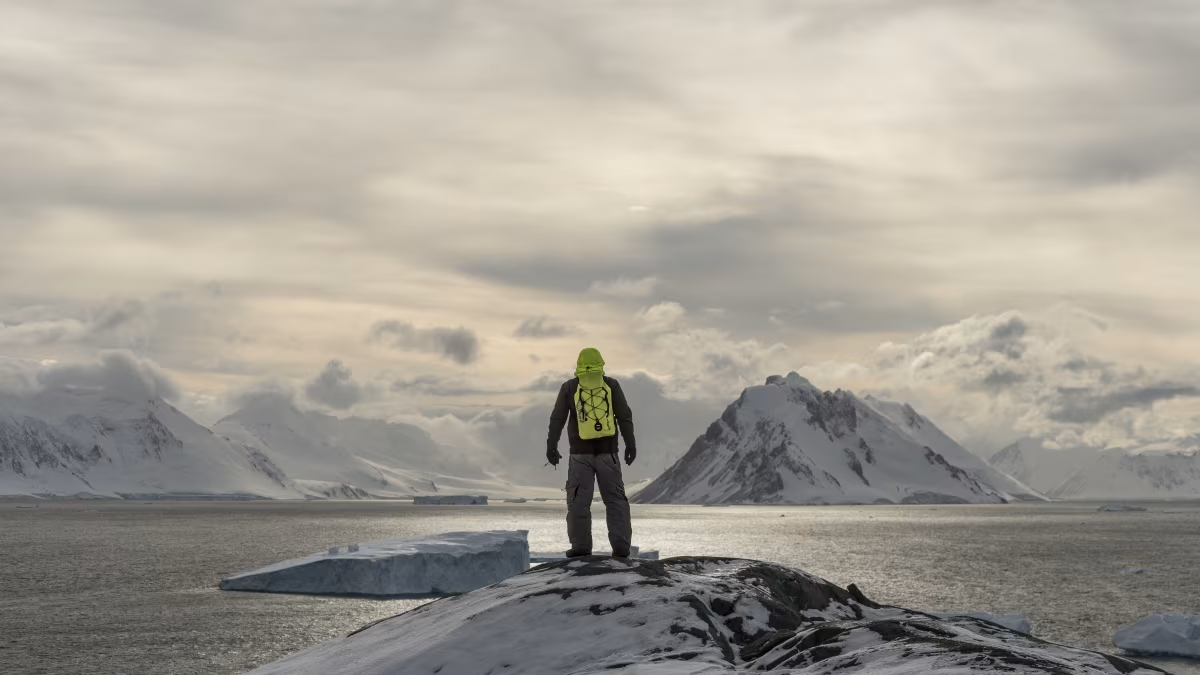
Almost like phosphorous.
Exactly. There was no light from behind, no flashes or sparks or anything inside the cloud. Just a green light that lasted a few full seconds. Nobody I have asked – and I have asked a lot of people – has been able to give me a solid explanation for what it might have been.
But no matter what it was, it was big and beautiful and incredible.
You should give it a name before someone else does, just in case it really is undiscovered. Rustyn’s Cloud, maybe?
How about the Mesdag Phenomenon?
I think we’ve found a title for this interview.
I think so, too.
